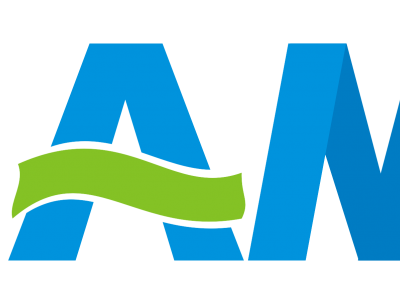-
 Chen Si
Hi there! Welcome to my shop. Let me know if you have any questions.
Chen Si
Hi there! Welcome to my shop. Let me know if you have any questions.
Your message has exceeded the limit.

Understanding Conductivity Transmitters and Their Applications
2025-10-13 13:31:07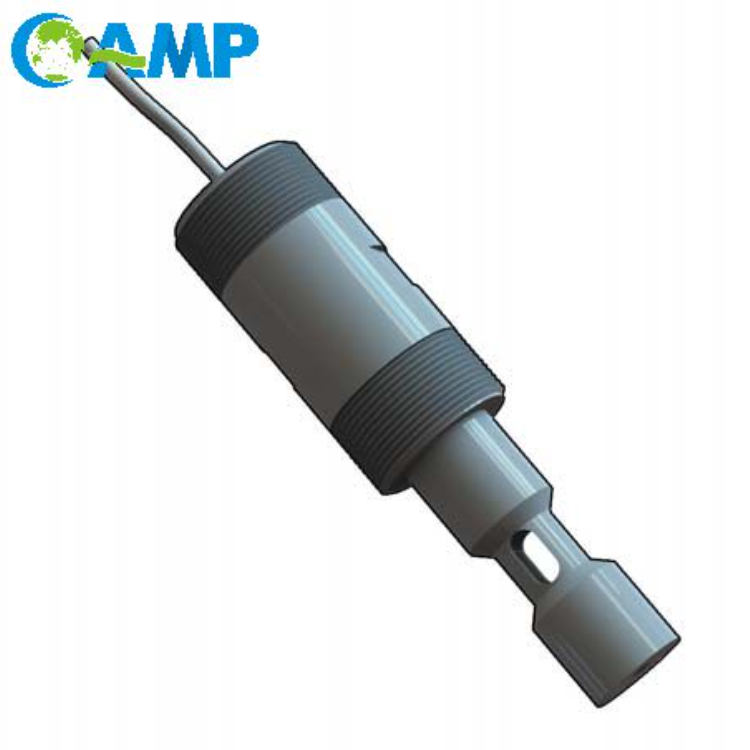
In today's technological world, different industries are inseparable from conductivity transmitters that influence the measurement and the regulation of the processes in these industries. These include watching the quality of water in environmental purposes and production facilitation in chemical enterprises. The article will cover the basics of conductivity transmitters, how they function, their essential characteristics, and the industries in which they are used. Suppose you are an engineer, a technician, or someone very excited about modern measurement technologies. In that case, this essay will help improve your skills in using these instruments. Read on to find out how the conductivity transmitter will transform and aid in precision monitoring and control in the future.
Introduction to Conductivity Measurement
Conductivity sometimes called conductive measurement, is a method used to determine the ability of the solution to conduct electrical current. Movement of ions in the solution is measured and the higher the concentration of such ions, the higher the conductivity will be. Industries use this in quality or safety assurance particularly in water treatment, pharmaceuticals, and common food manufacturing processes. A conductivity transmitter device is critical in the monitoring of processes and is best suited for optimum operational management.
Conductivity Transmitter: Key Points and Usage
A conductivity transmitter refers to the equipment that is utilized to determine the solute’s ability to conduct an electric current. Essentially, these devices operate on the principle of applying potential difference to a bucket of fluid with two electrodes. The strength of the electrical current that passes between the electrodes is determined by the concentration of ions in the solution. The latest conductivity transmitter models are developed using cutting-edge technologies, allowing accurate and dependable measurements even in the most adverse conditions, such as extremely high temperatures and pressures.
Main Characteristics and Applications
Accuracy: The development of high-reach conductivity transmitters has enabled evaluations of conductivity in the ranges of 0.05-500 µS/cm and mS/cm, respectively. This gives excellent accuracy for application in a wide range of industries.
Frequent Feedback: The apparatus is integrated with theoretical figures concerning solution conductivity that can be imparted as often as needed while using the regulatory apparaIus.
Resistant to Aggressive Conditions: some of the equipment can be found with casings made of stainless steel, amyloids, and thermal insulators, along with numerous mechanical safety measures.
Summary and Industrial Applications
Water treatment:
Maintaining optimal and efficient function of these plants is in управленецеч eyiti or all of the plants uses the conduction levels regulation.
Capturing changes in the purity of domestic water supplies so that they are not penetrated by components harmful to the health of people.
Pharmaceutical production:
Checking water intended for injection for any risks associated with the rules of USP and quantifying the waters.
Food & Beverage Processing:
Assess the ability to add the specified amount of salt to the brine or salty solution, which sometimes aids in preservation and enhances taste.
Providing Data with analysis
The market in 2025 report highlights the growth of the conductivity transmitter to be at a rate of 6.2% CAGR due to the growing focus on water-based processes on improving the need for process automation. Also, thanks to IoT and home automation in real-time control and diagnosis, the market has experienced growth.
One instance is that of the manufacture of pharmaceuticals where a decrease as small as 2-5 µS/cm from the desired conductivity values may trigger a recall of products, hence emphasizing the importance of Quality Control as facilitated by these instruments. Similarly, in a reverse osmosis plant, drinking water is expected to have a conductivity of less than 500 µS/cm.
Significance in Industrial Uses
Anticipation of the ever-increasing quest for cleaner water and higher production efficiency in industries sees a rise in the use of sophisticated conductivity sensors. The latest market survey found that the global conductivity sensor market will grow at a compound annual growth rate of 7.8% in 2025, reaching over 1.5 billion dollars by the end of 2030. The factors enhancing the market are the growing adoption of Internet of Things-based monitoring solutions and the combination of artificial intelligence in predictive maintenance.
Advances in conductivity transmitters have been made concerning the use of advanced multi-parameter sensors, which measure not only conductivity but also temperature, pH, and more. These devices are increasingly integrated into water treatment processes to control the quality of the product delivered to the consumer in real time avoiding its deficits. Thus, the US Environmental Protection Agency further sets, inter alia, a TDS level – the so-called total dissolved solids of 500mg/l., Accordingly conductivity meters are used to control the right level of the solution.
In addition, these sensors are employed in sectors such as food processing, oil processing, particularly to enhance the quality of processes and also comply with the regulations. Thus, in breweries for example, accurate conductivity measurements ensure production lines are washed to follow a specific protocol and so everybody gets the same taste without any chances of contamination.
The use of data to improve productivity and sustainability in the modern world is a growing trend. For instance, the implementation of smart conductivity monitoring systems in manufacturing facilities has led to a reduction in energy consumption by 15-20%. This highlights the importance of technology in managing conductivity across different sectors.
Key Features to Look for in a Conductivity Transmitter
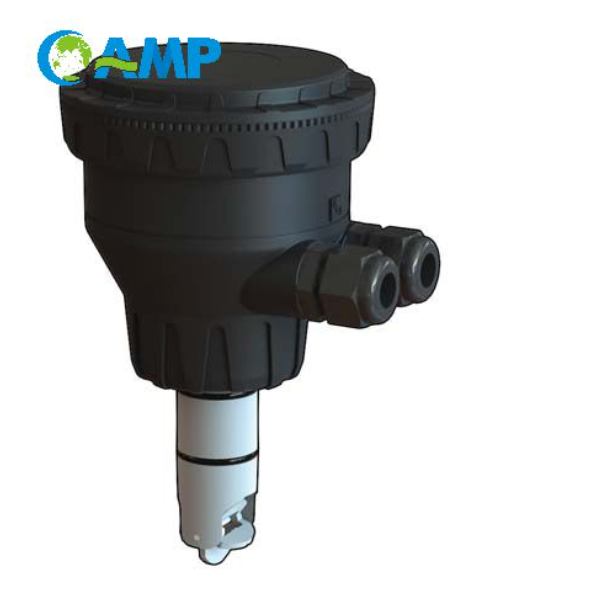
There are a few key factors I consider when selecting a conductivity transmitter: high accuracy, ruggedness, and easy integration with pre-existing systems. Real-time data monitoring, temperature compensation, and low maintenance are also vital features for reliable and efficient operations.
Measurement Range and Accuracy
The accuracy and measurement range of a conductivity transmitter are critically important for generating precise and correct readings. In choosing a transmitter, make sure you select one having a measurement range applicable to your application, which means it covers the expected conductivity levels. Ensure that the accuracy specification meets your process requirements, achieving ±1% of reading or better for most industrial applications. This equips your transmitter for dependable performance and, in turn, facilitates efficient process control.
Compatibility with Different Liquids
Proper calibration and maintenance are important for conductivity transmitters to keep them performing consistently. Conductivity transmitters should be calibrated at regular intervals as prescribed by the manufacturer. Inaccurate measurements can result if contaminants or buildup interfere with the sensor; therefore, cleaning and inspections for damage are important. Calibration solutions must fit the transmitter type and calibration data must be saved-that only provides for traceability.
Integration With PLCs and Control Systems
By integrating conductivity transmitters with programmable logic controllers (PLCs), automatic monitoring and control of the various processes become possible. This ensures greater accuracy, as the data fed into the system is real-time and swift control can be applied to oversee the operations being run. In addition, the less manual intervention is needed, the safer and more consistent the operating procedures become. With a proper setup, the communication between the devices occurs smoothly, and in return, optimizes the entire system performance.
Applications of Conductivity Transmitters
In many applications, conductivity transmitters are needed to provide accurate readings of water quality, chemical dosing of industrial processing, and controlling conductivity levels in cooling towers, and boilers. These transmitters are necessary in maintaining certification and efficiency for food and beverage, pharmaceutical manufacturing, and wastewater treatment industries.
Water Treatment Monitoring
From inception to completion, conductivity transmitters are essential for water-treatment systems, providing real-time updates on water quality. They provide readings about dissolved salts and other impurities in the water, which correlate directly with conductivity. According to some recent data, the range for optimum conductivity for drinking water usually lies between 200 and 800 µS/cm, although ultrapure water used in some industries may maintain a conductivity of less than 1 µS/cm. Any deviations from these ranges can signal contaminations in the water or inefficiencies within the treatment system.
The modern conductivity transmitters are embedded with high-end features such as automatic temperature compensation and digital interfaces for accurate readings and interfacing with modern SCADA (Supervisory Control and Data Acquisition) systems. This circuitry assures absolute parameters and full compliance with strict environmental laws, say from the EPA or the WHO. Platform-based application transceivers also minimize the power required for purification and the cost associated with chemical applicability, thus rendering the instrument a green and cost-efficient method of water treatment.
Chemical Processing Applications
A chemical processing plant relies on measurement and monitoring techniques to maintain safety, enhance operational efficiency, and ensure that regulatory standards are met. As the chemical industry grows, more advanced pressure level transmitters, along with other cutting-edge technologies, become essential to handling volatile chemicals, controlling reactions, and maximizing process yields. Recent industry analyses forecast the global chemical process instrumentation market to expand at a CAGR near 6.5% from 2025 through 2030 as the demand for high-quality sensors and transmitters continues to grow.
Modern transmitters in chemical applications often come equipped with digital protocols that are HART, FOUNDATION Fieldbus, or Profibus. This ensures their seamless integration with plant-wide control systems. Moreover, multi-parameter sensors minimize downtimes by providing real-time diagnostics and predictive maintenance alerts, thereby reducing operational costs and keeping unwanted shutdowns at bay.
Energy efficiency remains an important aspect in the chemical sector, as highlighted by IEA data. Modern transmitters, in turn, achieve this by reducing energy use in heating, cooling, and pressure control operations by as much as 20 percent in some instances. The chances are thus that chemical industries remain sustainable while staying competitive with the performances of operations.
Food and Beverage QC
Food and beverage industries require precision and accuracy to protect the safety and quality of their products. High-performance transmitters and sensors found in various parts of the plant are critical for monitoring operations in parameters like temperature, pressure, humidity, and flow. As recent insights suggest, the global food safety testing market is projected to grow at a CAGR of 7.9% from 2025 to 2030, driven by a surge in consumer demand for transparency and stringent regulatory frameworks.
Complex automation systems equipped with smart transmitters enable real-time monitoring and control, aiming to eliminate contamination risks and waste. Taking the beverage industry as an example, modern temperature sensors act within milliseconds upon detecting a critical deviation to keep the pasteurization and sterilization processes uniform. The other source of data, i.e., points out that employing such technologies can augment operational efficiency by as much as 15% and reduce production costs overall. This technology would help not only to protect public health but also to enable companies to comply with global standards and certifications such as ISO 22000 and HACCP.
Benefits of Using Conductivity Transmitters
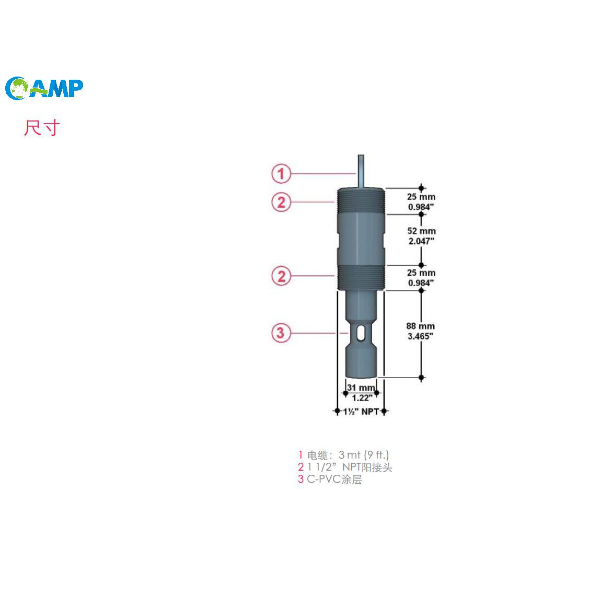
The conductivity transmitters allow me to accurately measure the process, thus enabling me to maintain process efficiency and compliance. I monitor and control several critical parameters to ensure minimal downtime and, consequently, improve the quality of the finished product in various industries.
Real-Time Monitoring and Control
Their correct upkeep and calibration will guarantee the long-term accuracy and reliability of the conductivity transmitters. This means the calibration of the instrument should be done in regular intervals or whenever it has been subjected to conditions that may have changed its performance.
Calibration is the process of checking the measurement against known standard reference solutions so that the instrument will be giving correct readings. Usually, calibration intervals are set according to the recommendations from the manufacturer.
The maintenance procedures include cleaning the electrodes for any kind of buildup or contamination as some transmitters can compromise accuracy with the passage of time if left untreated. The cleaning method used should be appropriate and compatible with the transmitter's material to prevent damage. The wear and tear of the instrument should be observed, and seals and sockets inspected. The electrical wiring should be checked for corrosion; all these measures will go a long way toward ensuring an instrument remains functional.
Modern conductivity transmitters have typically self-diagnostic tools that warn about potential calibration drift or sensor faults. These should be taken into consideration, with a detailed and systematic log of all calibration and maintenance activities kept, to ensure equipment performance, operational efficiency, and longevity.
Process Efficiency Enhanced
Proper stabilization of conductivity measurement processes ensures accuracy and depends much on calibration. It guarantees the transmitter is functioning within its prescribed limits, since the risk of inaccuracy restricting the analysis of processes can never be discounted. The best practices that should be adopted include:
Certified Calibration Solutions Would Be Ideal
Use high-quality calibration standards for adjustment. The calibration solutions should be certified, having known conductivity values. These should be close to the value expected in the application, such that the adjustment will be properly made.
Temperature Compensation
Since conductivity varies with temperature, verify that the temperature compensation in the transmitter is functioning well. Generally, calibrate at temperatures similar to conditions in the process.
Regular Verification
Regularly compare the readings of the transmitter with those of an independent reference to detect early drift and correct it. Depending on the process requirements, calibrations can be more frequent, especially when the cases involve one or more extreme variations or risk of contamination.
Thorough Cleaning Before Calibration
Before calibration, clean the sensor electrodes to remove deposits or contamination interfering with the reading. Use suitable cleaning reagents depending on the materials of the electrodes and rinse thoroughly to prevent residues.
Keeping Track of Calibration Activities
Keep a detailed record of calibration activities, including date of calibration, observed deviations, and adjustments applied; it highlights the traceability to an end that can help best diagnose further issues.
By following these calibration procedures, accuracy of measurement and life expectancy of the conductivity transmitter can be guaranteed, meaning less downtime and continuous process efficiency.
Resource Optimized Cost-Savings
Recap of Some Main Applications
Conductivity transmitters have maintained an undeniable status as crucial technical parameters in those industries where accuracy, measurement, compliance, standards, and operational efficiency are paramount. Whether monitoring the purity of water in treatment plants, ensuring product quality in pharmaceutical manufacturing, or optimizing chemical processes, the data provided by these devices is trustworthy and useful. Their ability to work under various environmental conditions and interface well with current automation systems adds to their relevance today.
Consult an Expert for a Custom Solution.
The decision to select the conductivity transmitter best suited for a particular process can be intricate, depending on considerations such as environment, accuracy requirements, and system compatibility. Seeking consultation with industry experts ensures solutions are created to suit these needs for ideal performance and long-term reliability. With proper advice, companies can utilize conductivity transmitters for productivity, efficiency, and sustainability, both in the short term and the long term.
Future Trends in Conductivity Measurement
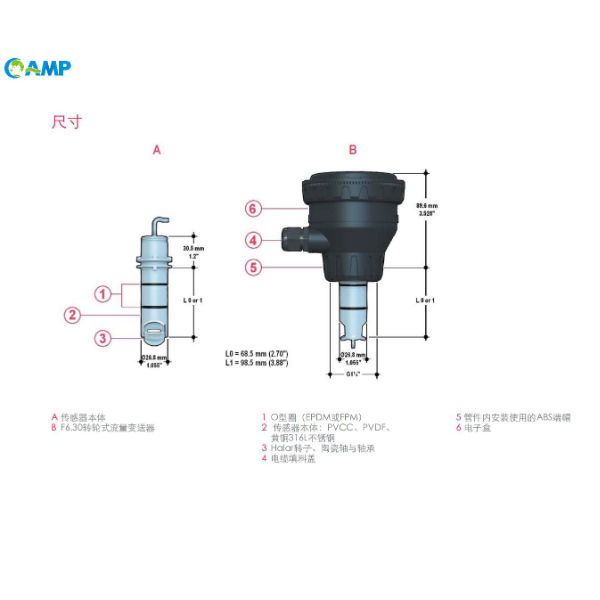
Conductivity measurement improvements are gearing toward the development of smarter, more computerized transmitters with better accuracy; ease of integration with automated systems; and greater diagnostic capabilities. I believe such trends will make conductivity transmitters more reliable and efficient, helping me streamline processes and adapt to changing technological demands.
Sensor Technology Advances
Recent advancements in sensor technology have considerably affected Conductivity Measurements, mainly in terms of accuracy, reliability, and functionality. Modern sensors are, in fact, fitted with temperature compensation to give accurate readings even at changing environmental conditions. Furthermore, with the advent of non-contacting sensors, durability increased, and maintenance decreased significantly because these sensors were not exposed to contaminants and abrasives. These innovations are useful for industries like chemical processing and wastewater treatment, where harsh conditions challenge traditional sensor design.
The merger of conductivity transmitters with Internet of Things (IoT) platforms and smart systems has revolutionized the process of monitoring and control across industries. The devices and systems allowed by the IoT collect data in real time and allow operators to monitor critical metrics from remote locations. Accordingly, this connectivity supports predictive maintenance; thus, it can detect potential problems to avoid downtime and maintenance costs. Smart systems, on the other hand, analyze conductivity data patterns, thereby allowing process optimization on a dynamic basis for sustainability and resource efficiency. For instance, operators in water treatment plants can use IoT-integrated sensors to vary treatment processes based on the real time water quality data, thereby ensuring minimum use of chemicals while maintaining the level of water compliance as per regulations.
Integration with IoT and Smart Systems
Maintenance is required on conductivity transmitters to carry operation and may be whenever accuracy of the measurement is in question. Decisions relative to the calibration schedules, cleaning, and inspection shall be considered.
Calibration
Calibration shall be regularly done by the use of standard and high-quality solutions that are close to the expected range of conductivity for the given application. It is always good practice to follow the instructions of the instrument manufacturer in relation to calibration intervals as they may differ depending on the wet environment of the process and the specific demands of the application. Recording of calibration data should be adhered to as this information will prove useful at a later time for analyzing trends and for identifying and resolving related problems.
Cleaning and Inspection
Clean the Electrodes
Conductivity sensors suffer fouling or scaling over time, especially if installed in a harsh atmosphere. Regular cleaning of the electrodes with its specified solutions helps keep buildup away from assuring accurate measurement. Walkthrough inspection for wear, corrosion, or damage may also guarantee dependable operation of the transmitter and any wiring.
Temperature Compensation Check
Since conductivity is a function of temperature, the activation of the temperature compensation by the transmitter should be checked. Such tests should be done occasionally so that they can assure the accuracy of measurement with respect to temperature changes in the actual working environment.
Preventive Maintenance Approach
By having a scheduled preventive maintenance plan, this will probably extend the lifetime of the device, and unplanned downtime can be mitigated along with disturbances in the operations. The prevention approach to maintenance is enhanced when transmitters are so advanced that diagnostic and predictive maintenance can provide early warnings to operators about potential failures.
Keeping the proper maintenance routinely, you keep the transmitters working efficiently at as low costs as possible given that unexpected repairs set in or the process takes a left turn. Maintenance yields reliable data that are the very foundation for quality control and regulatory approvals across an industry.
Recap of the Importance of Conductivity Transmitters
Working alongside industry experts guarantees enhancement in the selection and use of conductivity transmitters for specific applications. Industry experts will assist you in determining the most suitable technological application for your requirements. This may include advising on transmitter selection, system integration, and calibration practices, all necessary to ensure that the process works efficiently and extends the plant's service life. Industries stand to gain maximized efficiency, regulatory compliance, and long-term savings by engaging with experts. Using expert knowledge gives you an edge in understanding the new offerings for conductivity measurement solutions, thus keeping your operations on the cutting edge of technology.
Tags: Conductivity transmitter
